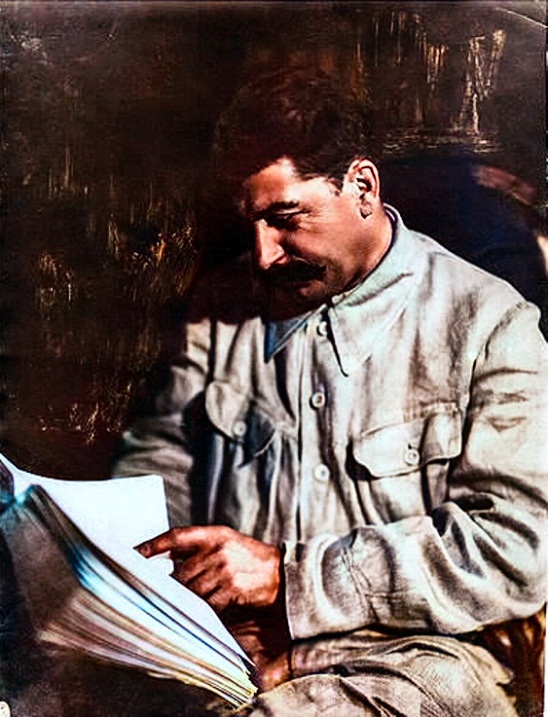Image is from this SCMP article.
Much of the analysis below is sourced from Michael Roberts’ great website.
Japan’s ruling parliamentary coalition, consisting of the LDP (purple) and it’s junior coalition partner Komeito (in light pink) have lost their ruling majority. They have ruled post-war Japan for almost its entire history. The LDP is currently led by Shigeru Ishiba after Kishida stood down due to a corruption scandal, and ties to the Unification Church.
While geopolitical factors (over the cold war between the US and China, etc) may have played a role, by far the biggest reason for this result in the poor economic conditions over the past few years. Inflation has risen and real wages have fallen, with little relief for the working class via things like tax reductions. While inequality in Japan is not as extreme as in America, it is still profound, with the top 10% possessing 60% of the wealth, while the bottom 50% possess just 5%.
Shinzo Abe previously tried to boost economic performance through monetary easing and fiscal deficits, while Kishida ran on a “new capitalism” which rejected Abe’s neoliberalism and promised to reduce inequality. Nothing substantial has resulted from all this, however, other than increasing corporate wealth. Innovation continues to fall, and domestic profitability is low, resulting in decreasing investment at home by Japanese corporations. Labour productivity growth has only slightly picked up since the mid-2000s and is falling again. The rate of profit has fallen by half since the 1960s, and Japan has been in a manufacturing recession - or very close to it - since late 2022. In essence: there is no choice but between stagnation or decline.
Please check out the HexAtlas!
The bulletins site is here!
The RSS feed is here.
Last week’s thread is here.
Israel-Palestine Conflict
Sources on the fighting in Palestine against Israel. In general, CW for footage of battles, explosions, dead people, and so on:
UNRWA reports on Israel’s destruction and siege of Gaza and the West Bank.
English-language Palestinian Marxist-Leninist twitter account. Alt here.
English-language twitter account that collates news.
Arab-language twitter account with videos and images of fighting.
English-language (with some Arab retweets) Twitter account based in Lebanon. - Telegram is @IbnRiad.
English-language Palestinian Twitter account which reports on news from the Resistance Axis. - Telegram is @EyesOnSouth.
English-language Twitter account in the same group as the previous two. - Telegram here.
English-language PalestineResist telegram channel.
More telegram channels here for those interested.
Russia-Ukraine Conflict
Examples of Ukrainian Nazis and fascists
Examples of racism/euro-centrism during the Russia-Ukraine conflict
Sources:
Defense Politics Asia’s youtube channel and their map. Their youtube channel has substantially diminished in quality but the map is still useful.
Moon of Alabama, which tends to have interesting analysis. Avoid the comment section.
Understanding War and the Saker: reactionary sources that have occasional insights on the war.
Alexander Mercouris, who does daily videos on the conflict. While he is a reactionary and surrounds himself with likeminded people, his daily update videos are relatively brainworm-free and good if you don’t want to follow Russian telegram channels to get news. He also co-hosts The Duran, which is more explicitly conservative, racist, sexist, transphobic, anti-communist, etc when guests are invited on, but is just about tolerable when it’s just the two of them if you want a little more analysis.
Simplicius, who publishes on Substack. Like others, his political analysis should be soundly ignored, but his knowledge of weaponry and military strategy is generally quite good.
On the ground: Patrick Lancaster, an independent and very good journalist reporting in the warzone on the separatists’ side.
Unedited videos of Russian/Ukrainian press conferences and speeches.
Pro-Russian Telegram Channels:
Again, CW for anti-LGBT and racist, sexist, etc speech, as well as combat footage.
https://t.me/aleksandr_skif ~ DPR’s former Defense Minister and Colonel in the DPR’s forces. Russian language.
https://t.me/Slavyangrad ~ A few different pro-Russian people gather frequent content for this channel (~100 posts per day), some socialist, but all socially reactionary. If you can only tolerate using one Russian telegram channel, I would recommend this one.
https://t.me/s/levigodman ~ Does daily update posts.
https://t.me/patricklancasternewstoday ~ Patrick Lancaster’s telegram channel.
https://t.me/gonzowarr ~ A big Russian commentator.
https://t.me/rybar ~ One of, if not the, biggest Russian telegram channels focussing on the war out there. Actually quite balanced, maybe even pessimistic about Russia. Produces interesting and useful maps.
https://t.me/epoddubny ~ Russian language.
https://t.me/boris_rozhin ~ Russian language.
https://t.me/mod_russia_en ~ Russian Ministry of Defense. Does daily, if rather bland updates on the number of Ukrainians killed, etc. The figures appear to be approximately accurate; if you want, reduce all numbers by 25% as a ‘propaganda tax’, if you don’t believe them. Does not cover everything, for obvious reasons, and virtually never details Russian losses.
https://t.me/UkraineHumanRightsAbuses ~ Pro-Russian, documents abuses that Ukraine commits.
Pro-Ukraine Telegram Channels:
Almost every Western media outlet.
https://discord.gg/projectowl ~ Pro-Ukrainian OSINT Discord.
https://t.me/ice_inii ~ Alleged Ukrainian account with a rather cynical take on the entire thing.


In microchip news:
Intel invests US$300 million in China chip packaging and testing plant
Text
The US chip giant aims to expand an existing chip packaging and testing facility in China, its largest market
US semiconductor giant Intel said it would expand its chip packaging and testing base in Chengdu, in a show of commitment to the mainland market despite a recent call by a Beijing-backed cybersecurity group to review the company’s products.
In addition to enlarging packaging and testing capacity for server chips, the facility will also establish a “customer solutions centre to improve the efficiency of the local supply chain, increase support for Chinese customers and improve response time”, Intel China said on Monday on its WeChat account.
The Santa Clara, California-based company will inject US$300 million into its local entity, Intel Products (Chengdu), to support the expansion, according to a WeChat post published by the city’s Reform and Development Commission.
Launched in 2003, Intel’s Chengdu plant is responsible for the packaging and testing of more than half of the company’s laptop processors shipped worldwide. Packaging and testing is the final step in semiconductor manufacturing, ensuring the quality and reliability of a product.
The facility plays a critical role in Intel’s global supply chain, while Chengdu provides a “favourable” business environment that paves the way for the company’s “stable growth”, Intel CEO Patrick Gelsinger said during a visit there last year. Chengdu is the capital of China’s southwestern Sichuan province.
Intel CEO is “frustrated” with CHIPS Act payout progress — Intel has received $0 from the $8.5 billion that the US government promised
Text
“My simple message is, ‘Let’s get it finished,’” said Gelsinger in an interview with The New York Times.
Intel CEO Pat Gelsinger has been frustrated with the U.S. government’s slow progress in providing Intel with its promised CHIPS Act funding. The New York Times shared recent interviews with Gelsinger and U.S. Secretary of Commerce Gina Raimondo about the CHIPS and Science Act.
The Biden-backed CHIPS Act represents $280 billion of funding for semiconductor manufacturing in the United States, giving the Commerce Dept. the ability to provide 10-figure grants and loans to companies like TSMC and Intel to supercharge a young U.S.-based chip industry. The Biden administration has promised Intel $8.5 billion in direct funding to build its new chipmaking fabs (plus $11 billion in loans and a 25% investment tax credit of up to $100 billion). Still, the company has not seen any of these funds so far.
Missing the funds is a problem for Intel, which is in turmoil due to $1.6 billion in losses in Q2 2024. Intel is cutting 15% of its workforce, representing 15,000 or more workers worldwide. Gelsinger has spent the past three months since the disastrous August earnings call restructuring his company and placating stockholders. He has become “frustrated” with the roadblocks the government has put in between Intel and its CHIPS Act funds.
“My simple message is, ‘Let’s get it finished,’” said Gelsinger in an interview. “There’s been renegotiations on both sides.” The U.S. government put some objectives between CHIPS Act recipients and their money, with milestones including completing building projects, securing customers, etc. “Obviously, with elections, you know, nigh in front of us, hey, we want this done,” said Gelsinger, with the possibility of a new presidential regime lighting a fire of urgency.
This reticence to give out CHIPS Act funding right away apparently stemmed from fears from the government that Intel specifically would not meet its promises. “[There is fear that] Intel is going to take chips money, build an empty shell of a factory and then never actually open it, because they don’t have customers,” said former Commerce Department official Caitlin Legacki.
Gelsinger’s tenure as CEO since 2021 has been marked by a desire to rebuild the company in a foundry-forward direction. One of the major forces behind lobbying for the CHIPS Act, Gelsinger also supercharged the Intel Foundry division, which, despite its extremely high costs, has been deemed crucial for Intel’s long-term success. The foundry is set to be spun off into an independent subsidiary, with its overseas operations paused for the next two years while its U.S. facilities are prioritized.
According to reports from last month, Intel is set to receive its first round of CHIPS Act funds before the end of 2024. Gelsinger, as mentioned above, is anxious to receive funds before the election, and Qualcomm is reportedly waiting until the election to make a move on purchasing Intel assets.